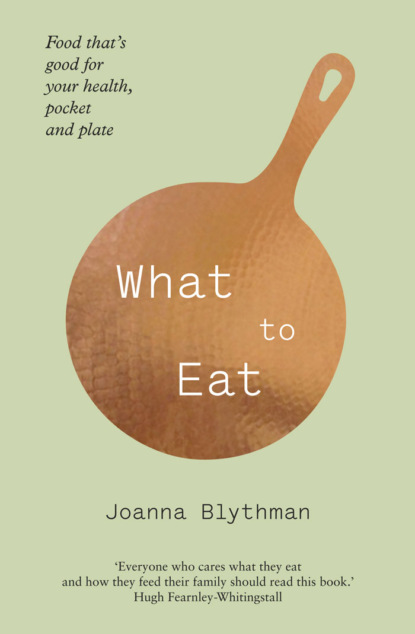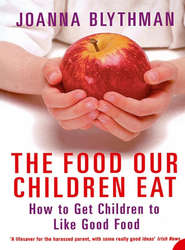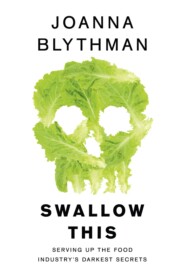По всем вопросам обращайтесь на: info@litportal.ru
(©) 2003-2024.
✖
What to Eat: Food that’s good for your health, pocket and plate
Автор
Год написания книги
2019
Настройки чтения
Размер шрифта
Высота строк
Поля
Are mushrooms a green choice?
Commercial mushroom growing, both conventional and organic, is a major user of peat and this is helping to drive the depletion of peat bogs in Britain and Ireland. Peat bogs, which take centuries to form, provide a very special and rare habitat for plants and animals. They also act as very effective ‘carbon sinks’, storing carbon dioxide below ground. When peat is drained and dug up, this escapes into the atmosphere and speeds up global warming. Some mushroom growers are trying to reduce their dependency on peat and looking at greener alternatives, such as fine waste from coal mines and quarries.
Mushroom-growing sheds and buildings are very energy-intensive because they need to be heated to high temperatures for much of the year. This makes them high users of non-renewable fossil fuels. This is to some extent offset by the fact that most of the mushrooms we eat are cultivated in the UK and Ireland, so no energy is involved in transporting them from abroad. Some producers are trying out alternative types of fuel that may be more environmentally friendly, such as old mushroom compost.
COMPETITION IN THE WOODS
With all our dark, mossy woods, Britain and Ireland make ideal territory for mushroom foragers, so it is perhaps surprising that wild mushrooms have not featured greatly in our traditional food repertoire. Instead, we have been largely indifferent to the natural bounty of fungi on our doorsteps, unlike people in continental Europe where wild fungi are widely valued as a free food source and figure prominently in many popular recipes.
Until recently, most of our wild mushrooms went unpicked, so any keen foragers and mushroom enthusiasts scouring the woods for species such as chanterelles and boletus (ceps, porcini) had expanses of woodland more or less to themselves. Much of what they harvested was exported to Europe, or sold to upmarket restaurants, and there was little home consumption. All that has changed with the arrival of migrants from eastern Europe, notably Poland, whose love for fungi in all forms does not allow them to leave nature’s bounty rotting untouched. Nowadays, by all accounts, our woods are on the picker’s map. Set out into the woods now with your mushroom knife and basket and chances are you’ll have company.
Where and when should I buy mushrooms?
Fresh mushrooms cultivated in the UK and Ireland are available year round. The best season for picking the most popular wild mushrooms species is late summer and autumn. Dried porcini – the most aromatic type of dried mushroom – are widely available in delicatessens and supermarkets. Asian supermarkets stock the best selection of dried oriental mushroom varieties.
Will mushrooms break the bank?
Cultivated mushrooms are blissfully cheap. Mushroom soup and mushroom risotto are some of the most inexpensive dishes you can make. Mushrooms on toast, fried with a little garlic and tossed with parsley, can make a surprisingly substantial main course. Mushrooms can also be used in quantity to spin out more expensive ingredients. For instance, you can considerably reduce the amount of meat in a recipe for beef stroganoff, and up the amount of mushrooms, without spoiling the dish.
Dried mushrooms, especially porcini, have a particularly intense flavour and aroma that can be used to perfume a dish. You get an astonishing amount of flavour from a very small pack. Water left over from soaking wild mushrooms should never be thrown away, but added to the dish to intensify its taste.
Fresh wild mushrooms are either free or extremely expensive, depending on whether you have picked them yourself.
Onions, garlic, shallots, leeks and spring onions
Onions are one of the simplest and most effective ingredients for getting flavour into any savoury dish. They lend a warm, sweet depth and their ability to caramelize beautifully creates the potential for further flavour notes. Onions that are marketed as specially sweet and mild are often watery and don’t have such a good flavour when cooked. Red onions are usually sweeter and less pungent than white ones but do not brown as well. It is common to see them used raw in salads, but check how hot your red onions are before you do this, as some are much too strong to be used this way. For real sweetness, imported Breton onions, sold in ‘Onion Johnny’ strings, are unbeatable.
Garlic adds pungency and strength to everything it touches. From the way it is sold, you might get the impression that it keeps for ever, but it doesn’t. It is best to think of it as a fresh vegetable, not a storecupboard item. If you don’t get through garlic very quickly, keep it in the fridge to slow down the rate at which it deteriorates.
Garlic is often old and tired, even though it looks superficially fine, but the sweet pungency it initially had has given way to a stale, ever-so-slightly rotten over-dominance. This can be disguised up to a point in cooked dishes, but it is only too apparent when used raw. Old garlic, and pre-prepared garlic paste, often used by the catering trade and processed food manufacturers, are the causes of ‘garlic breath’. Truly fresh garlic never has this effect.
If you want to use garlic raw, say for an aioli, or a chilled Spanish sopa de ajo (garlic soup), then only the freshest, sweetest, new summer crop is really up to the job. Garlic is at its very sweetest in May and June when it is ‘wet’; that is, the skin around each clove is moist and pliable. When it dries out, a head of still-fresh garlic will feel hard, and the cloves will be juicy, crisp and white when cut, without any ‘give’ or yellowness. Fresh green leaves of garlic, gathered in the wild, have a striking green colour and mild flavour, a bit like garlic-scented chives.
If you want to cook recipes that major on cooked garlic, such as whole roasted heads, or the classic French chicken with forty cloves of garlic, do so in summer and autumn when the home-grown and European crop is still fresh and firm. Heartbreaking though it is, any old, stale garlic is best abandoned. You can’t make a silk purse out of a sow’s ear.
The charm of shallots lies in their silky sweetness and their champion ability to caramelize, although they need long patient cooking to achieve this. Their mildness means that they are often better for using raw in a salad than either red or spring onions. Eat them raw or cooked to obliging collapse – anything in between is unpleasant.
Leeks are the most laid-back, mellow members of the allium family. They work especially well with cheese, ham and potato. It’s important to cook them thoroughly until they are truly tender: undercooked leeks that squeak when you try to cut them are a bit of a challenge.
Some spring onions are just immature onions, picked while still green. In this case, the white bulb end will be quite large and prominent. These spring onions are full of flavour, but sometimes they can be too powerful for salads. On the other hand, they can be delicious when lightly cooked, chargrilled for instance, when they exhibit some of the gentle savoury-sweet character of leeks. Other spring onions are from milder varieties specifically bred for use in salads. The white end is usually more of a slim tip than a bulb and they don’t keep as well as the more bulbous sort. Like red onions, it’s a good idea to nibble spring onions before using them to see how strong they taste.
Things to do with onions, garlic, shallots, leeks and spring onions
• Thinly sliced onions, fried in oil or ghee until golden and caramelized along with fresh chilli, sliced garlic and cumin or ajwain seeds, make a seasoned oil or ‘tarka’ to round off and enrich a simple lentil dal.
• Slowly sweat lots of chopped leeks in unsalted butter until very soft (allowing for shrinkage) and use them as the principal ingredient in a quiche along with cheeses such as Cheddar, Gruyère, Parmesan and ricotta.
• Whole heads of new summer garlic can be drizzled with olive oil and sprinkled with thyme and roasted in a hot oven until soft. The sweet, hot garlic pulp can be spread on toast or eaten with grilled or roasted meat.
• Roast small new potatoes in baking parchment parcels with half their quantity of unpeeled garlic cloves, some sea salt, pink peppercorns and olive oil.
• Thinly sliced, dark-fried, crisp shallots and garlic make a venerable garnish for many Asian noodle and soup dishes.
• Spring onions, softened in unsalted butter and puréed, make a mellow, easy-going accompaniment to white fish.
• To make an Irish champ, simmer floury potatoes in milk until soft, then mash them with thinly sliced spring onions and unsalted butter. This recipe also works well in early spring with leaves of wild green garlic instead of, or as well as, spring onions.
• If you stumble on a prolific source of wild garlic leaves, use them to make a garlic pesto, substituting the garlic leaves for basil.
• Vary a standard potato gratin by including a layer of sweated spring onions or leeks and grating Cheddar on top to form a crust.
• The sweetness of shallots works especially well when it is cut with the acid taste of vinegar, as in shallot red wine vinegar to splash on oysters.
• Whole shallots are an essential ingredient in a proper coq au vin.
Are onions, garlic, shallots, leeks and spring onions good for me?
Onions, garlic, shallots, leeks and spring onions all belong to the allium family of plants, which is thought to have many health virtues. It is no coincidence that in many cooking traditions a bowl of onion or garlic soup is often recommended for anyone who is feeling poorly. Each family member has its own make-up but, taken as a group, these vegetables are good sources of vitamin C, which supports the immune system and is protective against many diseases, several B vitamins, which help give you energy and support brain function, and beneficial minerals such as potassium, manganese, chromium and copper.
In addition, onions, garlic, shallots, leeks and spring onions contain a number of phytochemicals, natural plant compounds, which research suggests bestow many health advantages. The quercitin in onions, for instance, may slow down cell damage. Alliums contain natural sulphur compounds, which some research suggests may protect against infections, assist blood flow, help lower blood pressure and ease conditions such as bronchitis and asthma. These phytochemicals are present in all members of the allium family, but onions and garlic have the most. Some research suggests that the more freshly pungent the bulb, the more active these compounds are. So boutique varieties of onions and garlic bred to be mild may be missing the point.
How are onions, garlic, shallots, leeks and spring onions grown?
Allium crops are field-grown. Most of the garlic we consume is imported, usually from France and Spain or from the southern hemisphere, although some very fine garlic is commercially cultivated on the Isle of Wight and in Aberdeenshire. Onions, leeks and shallots all grow well in these shores. French growers, particularly the Bretons, seem to have cornered the market in elongated types of shallots, grown in the traditional way from sets of bulbs, rather than seed. Shallots grown from seed tend to be rounder and frequently come from Holland. Spring onions are often imported from abroad, from countries such as Spain, Mexico, Egypt and Thailand.
Are onions, garlic, shallots, leeks and spring onions green choices?
A surprising number of onions are imported from countries as various as Italy, Holland, New Zealand and Chile, which seems a little bit crazy, given that both the UK and Ireland can grow onions very successfully. Imports reach their peak in spring and early summer when the native crop is thinnest on the ground but they are often on our shelves at other times of the year when stored home-produced onions are still perfectly firm.
Supermarkets have encouraged the idea that rather than eating up the stored crop, customers want new season onions, even if this means transporting them from the other side of the world and charging considerably more for them. This is another example of supermarkets’ global sourcing, carried out in the name of the consumer, who, one suspects, isn’t really that bothered. In practical terms, there is never any need to buy imported onions. Visually, stored onions may not look as attractive and they won’t be quite as firm as fresh imports: you may need to peel off an extra layer. But unlike garlic, the flavour will still be good, and it is a lot more environmentally aware to eat onions grown closer to home. Think twice before you eat imported spring onions in winter or, for that matter, baby leeks. They will very likely have been chilled and air-freighted, which leaves a heavy carbon ‘foodprint’. Choose spring onions that have been grown here, not flown here.
A DEGREE OF CULINARY SOPHISTICATION
Garlic is the one member of the allium family that barely featured in the native cookery of these isles. Then, in the 1960s, we embraced it enthusiastically as one of those exciting foreign ingredients whose availability signalled a break from the plain tastes and austerity of the war years. To eat garlic displayed a degree of culinary sophistication. Undaunted by lack of experience or knowledge about how best to use garlic, we set about making this vegetable our own, armed with the latest kitchen kit, a garlic crusher, an implement forever destined to become rank and rusty with stale, adhering garlic.
Garlic bread – a baguette spread with butter mixed with salt and crushed garlic cloves – became a modern British classic without any clear European precedent, something to be served, perhaps, as an accompaniment to an Italian lasagne. It bore a resemblance to the French parsley butter that is served with snails, but the meatiness of snails is more of a match for garlic butter than bread. There were echoes of several European recipes such as the Catalan pa am tomaqùet or the Italian bruschetta al pomodoro, which sometimes, not always, call for the bread to be rubbed lightly with a cut clove of fresh garlic. But in such treatments, the garlic presence is infinitely more restrained than in the now traditional British garlic bread. Garlic bread epitomized the British ability to take ingredients and techniques from other culinary repertoires and reassemble them in a mongrel, hybrid form.
Nowadays, garlic baguettes are a staple of the supermarket chiller cabinet, a symbol of how the food industry has traduced and debased many ingredients and culinary traditions to invent popular lines of highly profitable, ‘value-added’ convenience food. What you have in the typical pre-prepared, pappy garlic baguette is a pile of refined white flour with dubious ‘flour improvers’ and additives that has been spread with extremely salty butter laced with anonymous dried green herbs and dollops of factory-prepared garlic pulp with a taste and odour that will pollute your breath until it eventually works its way through every pore in your skin. Do we really understand garlic? Looking at the supermarket baguette, perhaps not.
Where and when should I buy onions, garlic, shallots, leeks and spring onions?
UK- and Ireland-grown onions and shallots are available year round, sometimes from stored supplies. They are at their freshest and newest in summer. Leeks are harvested from August until March. Spring onions are at their best, not surprisingly, in spring and early summer. The European and home-grown garlic crop comes on to the market from late May and stored bulbs are available until early spring. After Christmas, the new crop of southern-hemisphere garlic comes on to the market.
Will onions, garlic, shallots, leeks and spring onions break the bank?
Onions, garlic, shallots, leeks and sping onions are all extremely affordable. Wild green garlic leaves grow abundantly in woods in early spring and announce their presence with a distinctive aroma. Follow your nose and pick them for free.
Tresses of onions imported from specialist onion growers in France cost more than the standard equivalent, but they do tend to have a superior eating quality. They are characteristically pink, or slightly mauve-tinged, exceptionally juicy and soften down to a delicious mush. If you are making a dish where the onions need to be really melting, such as an onion jam or a French onion tart, then these onions are worth the expense.










